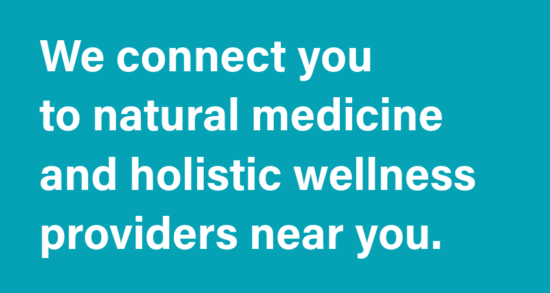Defining Medical Marijuana?
Medical marijuana is used to help treat specific health problems. Unlike recreational marijuana, which is used for enjoyment or relaxation, medical marijuana is taken under a doctor's guidance to manage symptoms of illnesses or conditions.
What Is Cannabis?
Cannabis is a plant that contains many natural substances. The most well-known of these are called cannabinoids. Two of the most essential cannabinoids are:
- THC (tetrahydrocannabinol): This chemical causes the "high" feeling and is also known for helping with pain and nausea.
- CBD (cannabidiol): Unlike THC, CBD doesn't make you feel high. It may help with anxiety, pain, inflammation, and seizures.
Cannabinoids interact with a system in your body called the endocannabinoid system. This system helps control mood, appetite, pain, and memory. When THC or CBD enters your body, it connects to special receptors in this system and can help reduce symptoms like pain or anxiety.
The Entourage Effect
The "entourage effect" is the concept that cannabis compounds might work better together than alone. Many experts believe that using products made from the whole plant—which include a mix of cannabinoids and natural oils called terpenes—can be more effective than using just THC or CBD by itself.

Medical Uses of Cannabis
Medical marijuana relieves symptoms of various medical conditions, such as:
- Long-term (chronic) pain
- Epilepsy and seizure disorders
- Multiple sclerosis
- Cancer symptoms like nausea and loss of appetite
- Anxiety and post-traumatic stress disorder (PTSD)
- Glaucoma
Some cannabis-based medications are approved by the U.S. Food and Drug Administration (FDA). For example, Epidiolex is a prescription drug that contains CBD and is approved to treat certain types of epilepsy.
Medical vs. Recreational Marijuana: What's the Difference?
Although medical and recreational marijuana come from the same plant, they are used for very different purposes and are often regulated in various ways.
Medical marijuana is used to treat or manage health conditions under the care of a healthcare provider.
Patients usually need to qualify by having a specific illness, such as chronic pain, epilepsy, or cancer.
In most states, they must get a recommendation from a licensed doctor and register with a state program to receive a medical marijuana card. This card allows them to buy cannabis from licensed dispensaries that specialize in medical use.
Recreational marijuana, on the other hand, is used for personal enjoyment, relaxation, or social reasons rather than for treating a medical problem.
In states where recreational use is legal, adults over a certain age—usually 21—can purchase it without needing a doctor's approval or a medical card.

There are also differences in the products and potencies available. Medical marijuana products often contain higher levels of CBD and THC may be formulated to reduce pain, nausea, or seizures without causing a strong high.
Recreational products, by contrast, contain higher ratios of THC to other cannabinoids and are often designed to enhance the psychoactive experience.
Additionally, medical marijuana is sometimes taxed less and may be allowed in stronger forms or larger quantities than recreational marijuana, depending on the state. Medical users may also access more personalized support from dispensary staff trained to help patients find the right product for their needs.
Getting Medical Marijuana
If you want to consume medical marijuana, here are the typical steps:
- Qualify for use: You must have a condition that your state allows for medical marijuana treatment.
- See a doctor: You need a recommendation from a licensed healthcare provider.
- Register with the state: You'll usually need to join a state medical marijuana program and get a medical marijuana ID card.
- Visit a dispensary: With your card, you can buy medical marijuana at licensed stores called dispensaries.
It's important to note that doctors don't "prescribe" marijuana the same way they do other medications. Instead, they recommend it because marijuana is still illegal at the federal level.

Different State Laws
Each state has its own rules for medical marijuana. Some allow full-strength THC products, while others only allow CBD or low-THC formulas.
In some places, doctors may offer synthetic cannabinoids, which are artificial versions of cannabis compounds, especially when natural cannabis products aren't legal.
Ways to Consume Medical Marijuana
Medical marijuana comes in many different forms. Each method affects the body in different ways:
- Dried flower: Smoked or vaporized
- Oils and tinctures: Droplets are placed under the tongue for fast relief
- Edibles: Mixed into foods or candies (slower effect but longer-lasting)
- Pills and capsules: Taken like regular medicine
- Topicals: Creams and lotions used on the skin for targeted relief
Start with a low dose to see how your body reacts, and increase slowly if needed.
Figuring Out the Right Dose
There's no one-size-fits-all dose for medical marijuana. The right amount depends on the person and their condition. Most healthcare providers recommend:
- Starting with a small dose, especially if THC is included
- Increasing slowly to avoid side effects
- Being patient, as it may take time to find the best amount
Some patients use microdosing, which means taking tiny amounts to avoid strong effects while still getting relief.

Side Effects of Medical Marijuana
While many people use medical marijuana without problems, it can cause side effects—especially at higher doses or when using products with a lot of THC. Possible side effects include:
- Dry mouth
- Dizziness
- Feeling high or euphoric
- Sleepiness
- Trouble thinking or remembering
- Anxiety or paranoia
- Nausea
- Slow reaction times
In rare cases, very high doses can lead to confusion or even hallucinations. Smoking cannabis can also harm your lungs, just like smoking cigarettes.
Is Marijuana Addictive?
Although most people use medical marijuana responsibly, about 1 in 10 users may develop cannabis use disorder. The risk is higher for those who use it at a young age. People with a history of substance abuse or mental health issues should be extra cautious and talk to their doctor before starting cannabis treatment.
Looking Ahead
Medical marijuana is becoming more accepted as research grows and laws continue to change. New products, like patches or sprays, are being developed, and states may add more qualifying health conditions to state-approved treatment lists.
For many people with severe or hard-to-treat conditions, medical marijuana offers new hope. Talk to a qualified healthcare provider if you think medical marijuana might benefit you.




